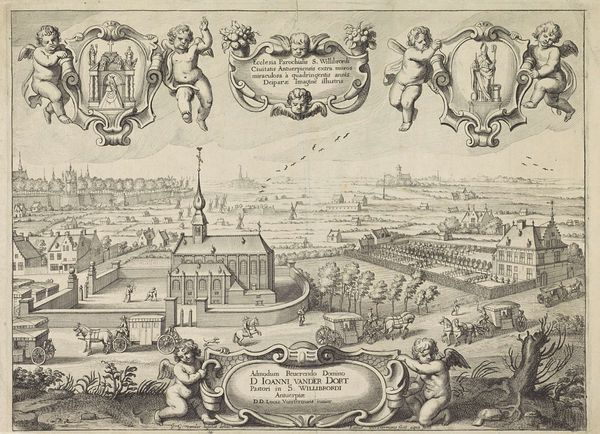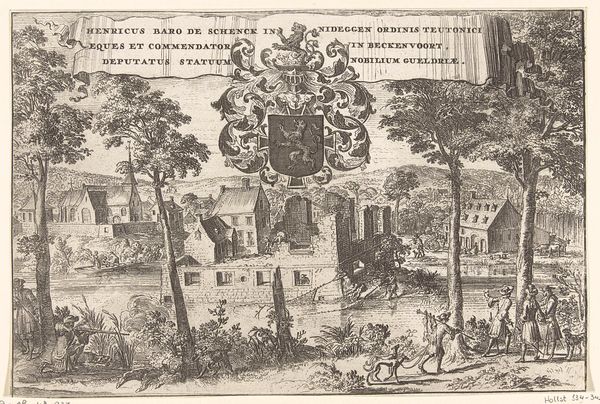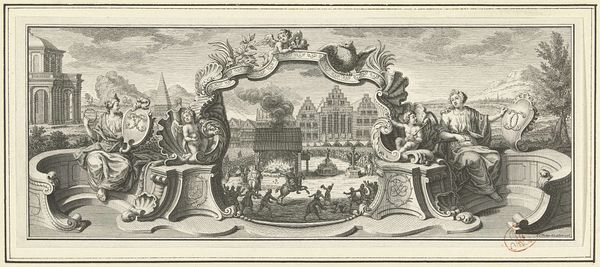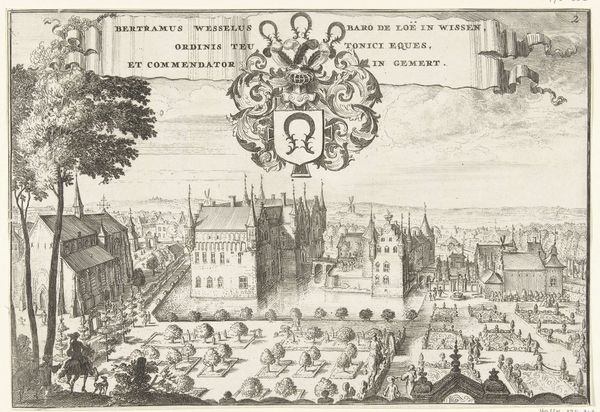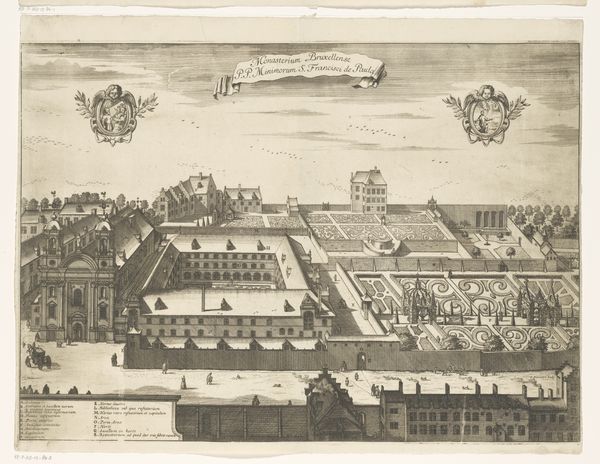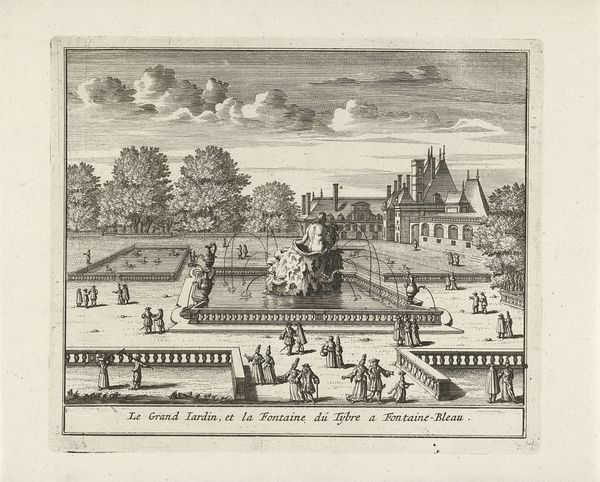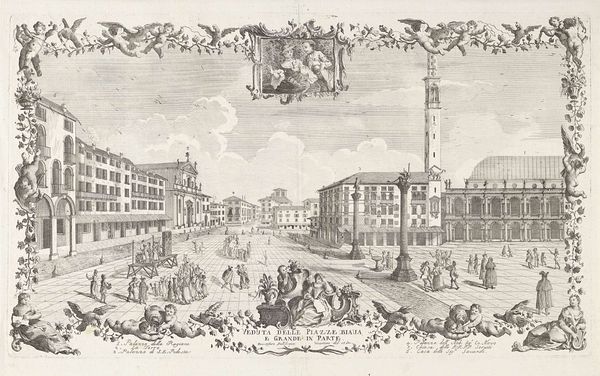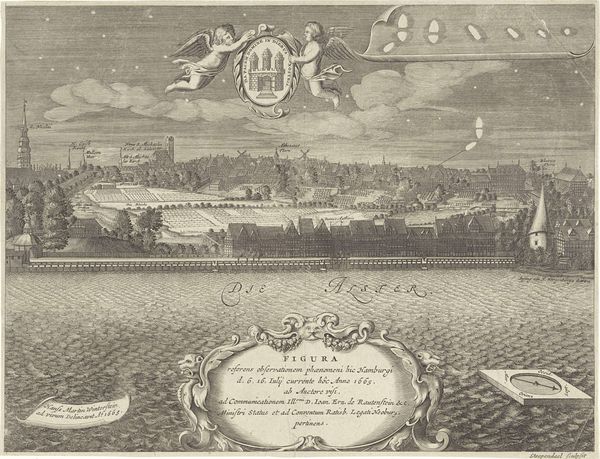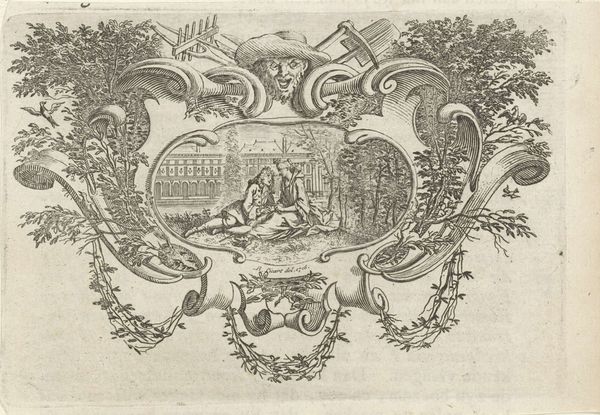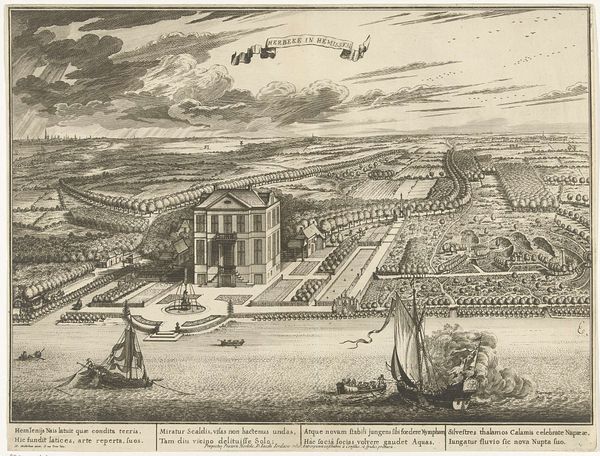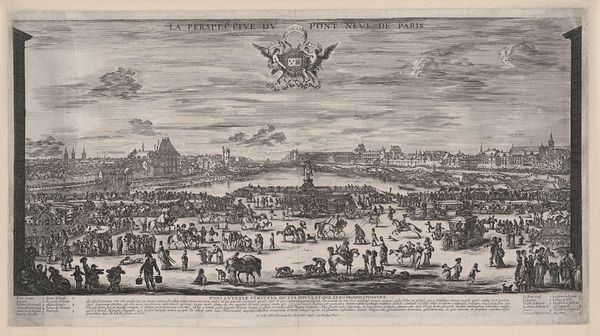
Koninklijk Paleis te Madrid en portret van koning Filips V, ca. 1702 1702 - 1703
0:00
0:00
print, engraving
#
portrait
#
baroque
# print
#
pen sketch
#
old engraving style
#
cityscape
#
history-painting
#
engraving
Dimensions: height 235 mm, width 340 mm
Copyright: Rijks Museum: Open Domain
This engraving of around 1702 depicts Madrid’s Royal Palace, its Plaza Mayor and a portrait of King Phillip V. It’s an anonymous work, but it was published in Amsterdam. The print gives us insight into the consolidation of Bourbon power in Spain and the role of cities and institutions in the projection of royal authority. The bird’s-eye views of Madrid emphasize the ordered spaces of governance and leisure. We see the Royal Palace, of course, but also the Buen Retiro gardens and the Plaza Mayor, which had become a site for spectacles like bullfights, seen here in the lower right. The portrait of Phillip V, the first Bourbon king of Spain, is framed by allegorical figures, trumpets and royal insignia, all intended to celebrate and legitimize his reign. Prints like this one were crucial for image-making in the early 18th century. To understand this image better, historians consult sources such as royal records, urban plans, and printsellers’ inventories to trace the dissemination and reception of such royal imagery. This helps us to understand the public role of art and the politics of imagery in early modern Europe.
Comments
No comments
Be the first to comment and join the conversation on the ultimate creative platform.
